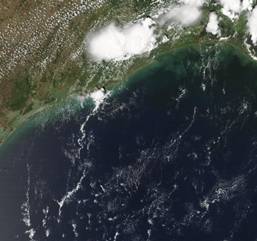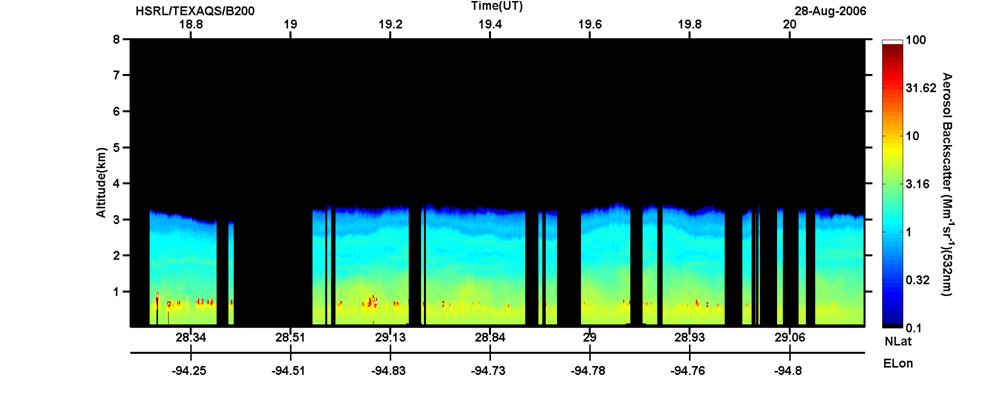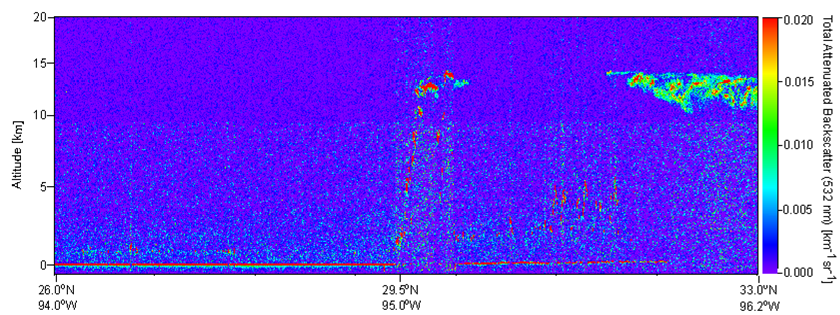
 Greg
McFarquhar
University of Illinois
Greg
McFarquhar
University of Illinois
|
GoMACCS
 |
 |
 |
| RGB image created using MODIS-Aqua data collected on 28 August 2006 over GoMACCS region. The presence of shallow cumuli over Gulf represents excellent case study for our simulations. | Profile of aerosol backscatter derived from HSRL on King Air for 28 August 2006 flight over Ron Brown and Gulf of Mexico. Presence of clouds noted by high backscatter between 500 and 1000 m, and presence of dust layer around 3 km (figure courtesy C.Hostetler & R. Ferrare). |
CALIPSO 532 nm total attenuated backscatter coefficients measured on 28 August 2006 over Gulf of Mexico. Cumuli seen at an altitude of ~1 km at left of the image, while a layer of cirrus and isolated altocumulus shown at right. |
| GoMACCS: The Gulf of Mexico Aerosol Composition and Climate Study (GoMACCS), sponsored by NOAA and conducted out of Houston Texas in August and September 2006, aimed at characterizing marine/continental chemical and meteorological processes over Texas and the Gulf of Mexico in order to improve the simulation of the radiative forcing of climate change by lower-atmosphere ozone and aerosols. There was also an investigation of the influence of aerosols on cloud properties and the role of clouds in chemical transformations. Participants in the project included the NOAA P-3 aircraft, the CalTech CIRPAS Twin Otter, The NASA King Air and the R/V Ron Brown. |
| Uof Illinois Role and Interests: Prof. McFarquhar and Prof. Di Girolamo were funded by NOAA to conduct modeling and satellite studies that utilized the data conducted during the field program to better understand the impact of aerosols on cloud properties. In addition, Prof. Di Girolamo along with graduate students Hailong Wang and Guangyu Zhao participated in GoMACCS, assisting in flight preparations and analysis of satellite data, in Houston. |
Publications arising from GoMACCS: To follow. |
Thesis arising from GoMACCS: Yang, Hee-Jung, 2010: In progress |